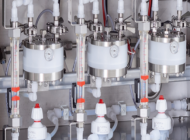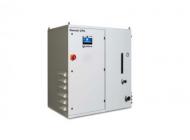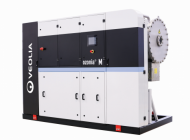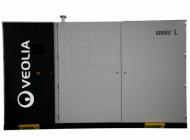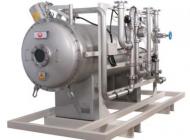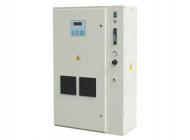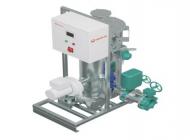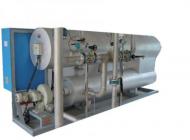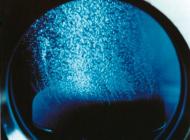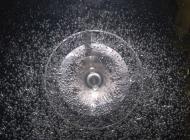Ozonia* Ozone Systems
High-quality, industry leading ozone systems for water treatment
High-quality, industry leading ozone systems for water treatment Ozone is one of the most powerful oxidation tools water treatment professionals have for purification and disinfection. Veolia has been the ozone water treatment industry pioneer for decades. We design and manufacture a complete range of Ozonia Ozone Systems from laboratory products to the largest ozone water treatment systems in the world.
Veolia’s Ozonia Ozone Systems are consistently ranked among the best in the industry for performance, quality and reliability. With research and development centers and manufacturing facilities on three continents, Veolia can deliver complete ozone systems to any customer specification. Trust the ozone technology leader with over 40 years of experience to help solve your water treatment challenges.
Ozone, also known as trioxygen, has the chemical formula O3 and is composed of three oxygen atoms. Ozone gas is naturally unstable at normal atmospheric conditions which means that in commercial applications, ozone must be made on-site using an ozone generator. The lifetime of ozone in water depends on various factors including water temperature, ozone concentration, and the composition of the water itself.

- Complete Ozone Systems
-
Veolia provides full lifecycle support for Ozonia ozone technology. We supply complete ozone systems that include all the components required to operate an ozone water treatment process safety and efficiently. Contact us today to learn how Veolia can design an ozone water treatment system optimized for your needs
Ozonia ozone systems include several sub-systems:
- Feed gas preparation systems
- Ozone generators
- Power Supply Units for ozone generators
- Ozonia* SmartO3 control systems
- Ozone gas contacting systems
- Vent Ozone Destruction systems
- The Power of Ozone Oxidation
-
Ozone is a highly effective disinfectant that eliminates bacteria, viruses, fungi, spores, yeasts, and parasites in water treatment. As one of the most powerful oxidizing agents available, it provides excellent solutions for municipal, industrial, and commercial water treatment needs.
Composed of three oxygen atoms (O3), ozone is naturally unstable under normal conditions, requiring on-site generation using specialized equipment. Its effectiveness duration in water varies depending on temperature, concentration, and water composition.
Ozone Formation Process
Ozone (O3) forms when oxygen molecules (O2) are broken apart and the reassemble into ozone molecules. This transformation requires an energyinput to occur.
Substance Oxidation Potential (IV) Molecular Oxygen atom (O) 2.42 Ozone molecule (O3) 2.07 Hydrogen peroxide (H202) 1.78 Chlorine (Cl) 1.36 Chlorine dioxide (ClO2) 1.27 Oxygen molecule (O2) 1.23 - Commercial Ozone Generation Methods
-
Two primary methods are commonly used for commercial ozone production:
Ozone is produced when oxygen molecules (O2) are split and recombined into ozone (O3). The reaction from (molecular) oxygen to ozone requires energy.
- Corona Discharge Process: This is the most widely used method where oxygen-containing gas passes through an electrical field created between two electrodes. The electrical energy causes oxygen molecules to split apart and reform as ozone molecules.
- Electrolytic Process: An alternative method for generating ozone in commercial applications.

Ozonia* specializes in designing both types of ozone generation systems and has developed advanced technology including their 2nd generation Intelligent Gap System Plus (IGS+), which delivers enhanced performance while reducing operational costs.
Download the Ozonia* Intelligent Gap System Plus (IGS+) Fact Sheet
- Ozone Process Application
-
From laboratory testing, to pilot testing, through design and engineering, Ozonia Ozone Systems enable you to solve your challenges. We partner with our clients to find solutions using oxidation. Our industry-leading oxidation process expertise can develop solutions for your water treatment challenges.
- Laboratory Testing
-
Our industry-leading oxidation process laboratory is equipped with state-of-the-art equipment, analyzers and data processing technology. Our expert staff bring over 20 years of combined experience to our clients.
- Piloting
-
We offer global piloting services to validation oxidation and AOP solutions will achieve results on your site. Ozonia Ozone Systems piloting services have standardized and customized solutions to fit any type of industry, application or site requirements.
Containerized pilot solutions
Modular pilots Customized pilot solutions
- Ozone
- Advanced Oxidation Process (AOP) Systems
- Research, Literature, & Expertise
-
Collaborating with Veolia allows our clients to access our industry-leading experience and database. Our expertise allows us to recommend al treatment process to minimize capital and operational costs.
Our services provide a technical-economical assessment to define the optimum oxidation process mechanics including ozone dose, concentration, and process ratios. W evaluate the site-specific evolution of water parameters (COD, TOC, AOX) and specific compounds (micropollutants, CECs) to ensure the feasibility of our solutions..

